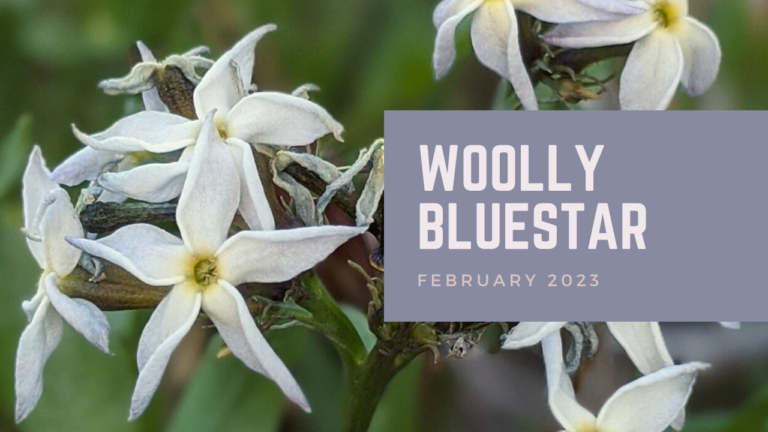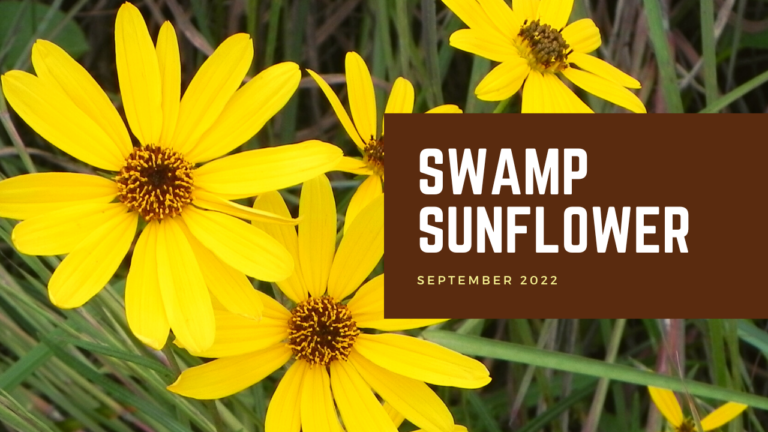Presented by Debbie Bush
January 10, 2022
Botanical name: Gaillardia pulchella
Common name(s): Firewheel, Blanket Flower, Indian Blanket
Family: Asteraceae (Aster)
Read: What’s in a name?
[MUS—EASY AND FUN]
[DEBBIE] Hello! Today I’m going to present our first Plant to the Month for 2022—Gaillardia pulchella. It is commonly known as Firewheel and Indian Blanket, and this colorful native belongs to the Aster family.
The genus Gaillardia encompasses many blanket flowers, three which occur in our area. The genus is named after Antoine Gaillard de Charentonneau, an 18th century French magistrate who was an enthusiastic amateur botanist.
Pulchella is an inflected form of the Latin word pulchellus, which means “beautiful little.”
Gaillardia pulchella is native to much of the United States. It is found from Nebraska, Colorado, Texas, and Arizona, rarely east into Arkansas and South into northern Mexico. It is naturalized east to the Atlantic states and west to California and South to Oaxaca in southern Mexico.
Firewheel is an annual or short-lived perennial. The multi branch stems are usually hairy and become woody at the base late in the season. Height is 12 to 18 inches, spread is six to 12 inches. The flowerheads are two inches across. They are red at the base and tipped in yellow. The disc flowers at the center are brownish-red and bloom colors may vary with the environment or soil type and with commercial cultivars. They are available commercially, but we always advise to make sure you read the botanical name to make sure you’re getting what you want. Each ray has three teeth at the broad end of the petal. And the low leaf branches are topped with bright showy flowerheads that bloom spring through fall. In our area, they bloom nearly year-round. I see the ones in the EIH garden, and they are constantly blooming.
Water use is medium. Over watering may actually cause the foliage to become floppy. Firewheel is easily grown in sun to part shade, but it must have good drainage, and it prefers sandy soils. So, for best results choose an open to lightly shaded site with well-drained soil. It is drought and heat tolerant, which makes it very popular amongst gardeners. And it is a pollen source for native bees and butterflies. Deer will eat the foliage so that’s something to make note of.
Propagation of Gaillardia is by seed. Plant in the fall and rake the seed into loose topsoil to ensure good seed to soil contact. With the moisture from rain or watering, Gaillardia will germinate in one to two weeks and establish a healthy taproot system before the winter frost. If you’re sowing the seed indoors in late winter, you should allow eight weeks before transplanting the well-rooted seedlings at the start of the frost-free period. After flowering ends, allow seeds to completely mature before mowing for re-seeding or collecting to plant in a new area. So, you want to look for heads with no dried petals persisting, and dried seeds can be stored refrigerated up to four years.
Gaillardia pulchella is one of the easiest wildflowers to establish. It is used in roadside plantings, prairie plantings, and meadows. It grows well in containers or mass plant it if you want some amazing color in your landscape. It works well as a border and in rock gardens. Gaillardia re-seeds easily, and it will exhibit a blanket like density, as shown in this video. Deadheading will extend the blooming time. And you should wait for the seeds to drop before removing any of the spent foliage.
Earlier I mentioned that there were other Gaillardias in our area, and one of those is Gaillardia aestivalis. Lanceleaf Blanketflower is its common name. The ray flowers of the Gaillardia aestivalis are tubular at the base and flare out at the top into three deeply cut lobes. I did a quick search on iNaturalist and only a few observations popped up. Most of them were at Exploration Green but G. aestivalis is also at Deer Park Prairie, and it also found at Bayside Regional Park’s Native Plant Garden. So, if you want to have a look at this plant, I suggest going there, and you may be able to see it.
Thank you!
[MUS—AND THAT’S IT]
Related Posts

Plant of the Month: Woolly Bluestar
Our Plant of the Month for February 2023 is Amsonia tomentosa, commonly known as Woolly Bluestar, Woolly Amsonia, Small Leaved Amsonia, or Gray Amsonia.

Plant of the Month: Lanceleaf Tickseed
Our plant of the month for October 2022 is Coreopsis lanceolata, commonly known as Lanceleaf Tickseed.
Botanical name: Coreopsis lanceolata
Common name(s): Lanceleaf Tickseed, Lanceleaf Coreopsis, Lance-leaved Coreopsis, Sand Coreopsis, Tickseed, Longstalk Coreopsis

Plant of the Month: Swamp Sunflower
Our plant of the month for September 2022 is Swamp Sunflower.
Botanical name: Helianthus angustifolius
Common name(s): Swamp Sunflower, Narrowleaf Sunflower, Narrow-leaved Sunflower

